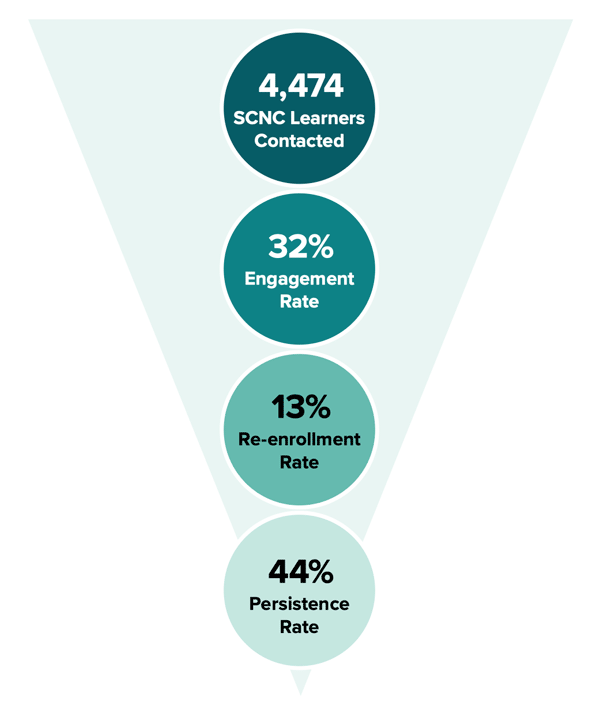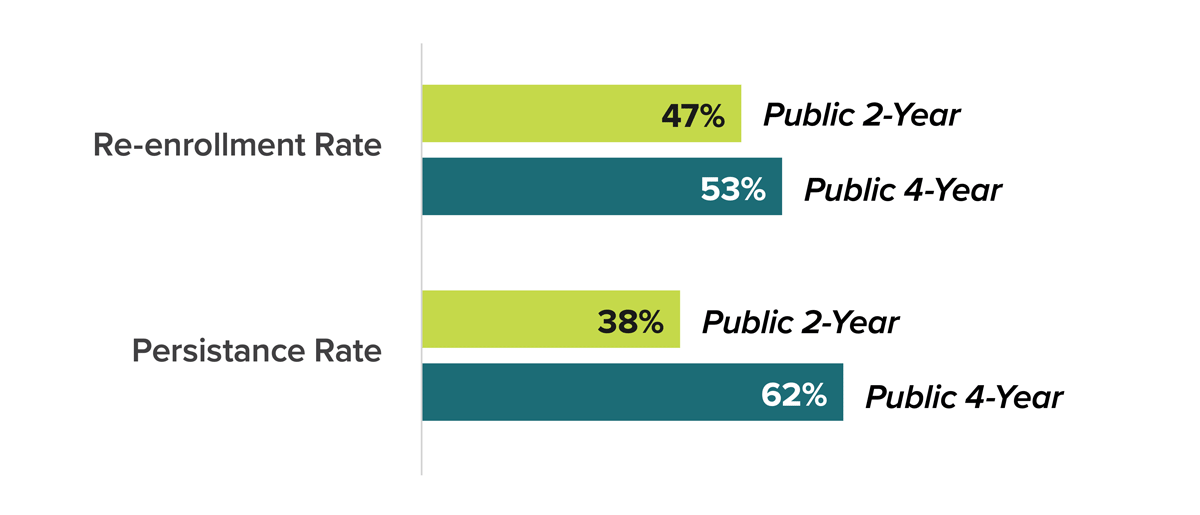What It Takes to Reengage Adult Learners: Emerging Lessons from California Reconnect

More than 43 million Americans have some college credit but no credential. Often labeled as “stopouts,” these learners are presumed to have given up. But our work on the California Reconnect initiative reveals something much more hopeful—and much more actionable. These students have not disappeared. They are waiting for systems that meet them halfway.

Over the past year, our team at Education Northwest worked alongside InsideTrack, the Institute for Higher Education Policy, and 13 California colleges and universities to evaluate the first two years of California Reconnect—a statewide initiative designed to reengage adults who have completed some college but no credential (SCNC learners). Our evaluation examined not just who re-enrolled, but why, and what works to bring students back. We explored the initiative’s impact through document review; focus groups with students, coaches, and others affiliated with the program; and analysis of student and coach data.
The results are compelling: Since launching in 2023, California Reconnect has contacted more than 14,000 SCNC learners. Among the first cohort of participating students, 13 percent re-enrolled. That’s more than six times the national average of 2.1 percent. Even more promising, 44 percent of students who re-enrolled through California Reconnect persisted into a subsequent term.
These outcomes are not accidental. They happened because the right combination of coaching, policy shifts, and institutional collaboration aligned in service of the learners.
Below, we share what we learned so far from our evaluation and what it takes to scale this work.
What We Learned About Effective Re-Enrollment
Personalized Coaching Is Not a Luxury; It’s Infrastructure
Behind every re-enrollment data point was a real human connection. As a core function of the California Reconnect initiative, highly trained coaches from InsideTrack reached out to stopped-out students, rebuilding relationships and trust by helping them identify and overcome barriers to reenrollment. Learners repeatedly shared how InsideTrack coaches made them feel seen, capable, and supported. This indicates that coaching was much more than logistical help; it was moral support, affirmation, and guidance tailored to each individual’s goals.
One participant shared, “Once you are disconnected or no longer enrolled, it’s kind of like you don’t exist. With my new coach, it’s a lot of moral support, and the fact that she’s a veteran like me is very helpful. The moral support has been the biggest help so far.”
Once you are disconnected or no longer enrolled, it’s kind of like you don’t exist. With my new coach, it’s a lot of moral support, and the fact that she’s a veteran like me is very helpful. The moral support has been the biggest help so far.
These coaching relationships proved critical to student persistence, as well. Our evaluation found that approximately 40 percent of participants who engaged with an InsideTrack California Reconnect coach successfully re-enrolled. This is a blueprint for student support systems everywhere.
Outreach Must Be Persistent, Multichannel, and Trusted
Coaches used email, SMS, and phone calls to contact over 14,000 learners. Students overwhelmingly responded to texts, but only when they trusted the source. Many participants totally ignored outreach messages, mistaking them for spam or scams.
The lesson? Personalization is not just about tailoring the content of your message; it’s about coordination. When outreach comes from a familiar institutional name and is reinforced by multiple trusted channels, students are far more likely to engage. Institutions should take an active role in legitimizing third-party partnerships and messaging campaigns.
The Biggest Barriers Are Not Academic; They’re Administrative
Even when students wanted to come back, institutions sometimes made it difficult. Reapplication fees, lost access to transcripts, and unclear reenrollment processes created unnecessary friction. Students who had been out for longer periods struggled most with reestablishing their academic standing.
Fortunately, some institutions began to shift their policies. One school streamlined the reenrollment process to a single form and an advisor meeting—no mandatory orientation or multistep paperwork. These kinds of changes matter deeply. They send a message that returning students are not starting over but rather picking up where they left off, with institutional support behind them.
One-Size-Fits-All Does Not Fit Re-Enrollment
Our analysis showed variation in re-enrollment and persistence by institution type. Students at four-year colleges had slightly higher progression rates than those at two-year schools, and learners who had been stopped out for fewer than two terms were much more likely to return.
This suggests that institutions need differentiated strategies that reflect their student population, academic programs, and operational context. What works for a regional four-year institution might not be right for a large urban community college—and vice versa.

What It Takes to Scale Effective Re-Enrollment
If higher education institutions want to bring back the millions of learners who left college without a credential, the California Reconnect initiative offers a playbook to follow:
- Data infrastructure: Institutions need clean, connected datasets that support proactive outreach, degree auditing, and integrated coaching models.
- Outreach and coaching capacity: High-touch, high-trust relationships drive re-enrollment. Systems must invest in the human infrastructure that supports returning learners.
- Policy alignment: From application holds to transcript fees, institutional and state-level policies must be revisited and reformed. Returning students should not face more red tape than first-time students.
- Institutional commitment: Success depends on cross-functional teams, communities of practice, and shared ownership of re-enrollment as a core student success strategy.
A Next Chapter in a Longer Story
California Reconnect pushes prior degree reclamation efforts even further—embedding coaching, equity-focused policy change, and continuous improvement into a statewide model.
The learners we call “stopouts” did not abandon their hopes; they stopped navigating systems that made it too hard to stay. California Reconnect shows what is possible when we remove those barriers and invest in student-centered design. And it is time for other states, systems, and institutions to follow suit.
Let’s stop asking why students do not return to college and start building the conditions that welcome them back.
Want to Learn More?
Visit InsideTrack’s website for a brief overview of the California Reconnect initiative and explore the full California Reconnect evaluation report for deeper insights and recommendations.
Leanne Davis is a managing researcher focused on postsecondary access and success. She works at the intersection of research, policy, and practice, with an emphasis on addressing issues of access and equity during transitions in the educational pipeline and exploring how policies and practices affect a student’s ability to complete a postsecondary credential.
Marbella Uriostegui is a senior researcher who specializes in equity in educational systems, multilingual students, and youth sociopolitical development. She uses research and service to create equitable pathways for marginalized young people to excel by strengthening family-school-community relationships, diversifying the educator workforce, and developing safe spaces where students can thrive.



